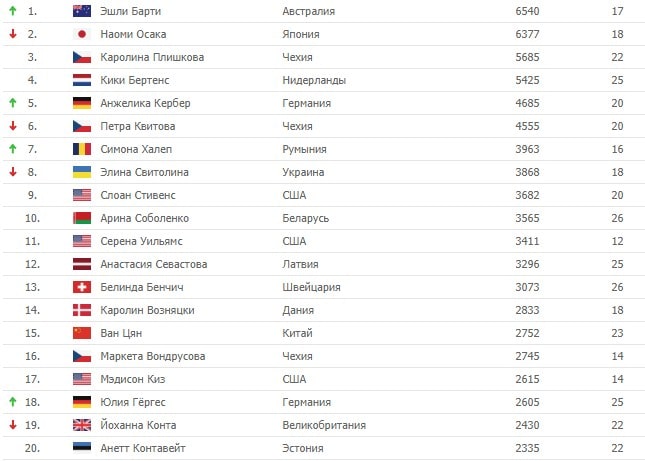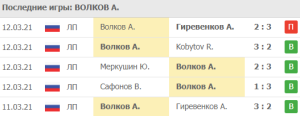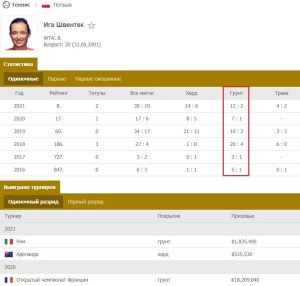
Of all the Grand Slam tournaments, Wimbledon in July is in a special position. It has several important features at once, which is why bettors have to change their betting tactics, which are successfully used in the other three large tournaments held on clay and hard. What are these features, what important points are worth paying close attention to, we will carefully analyze within the framework of this review.
Content
- Features of Wimbledon 2019
- Tournament specifics
- Transience
- Feed factor
- Psychology
- Wimbledon preparation tactics
- TOP-20
- Herbal Tournament Finalists
- English tennis players
- How to bet on Wimbledon?
- Summing up
Features of Wimbledon 2019
It is no secret that the English weather and long fights from year to year make adjustments to the Wimbledon tournament schedule. This, in turn, negatively affects the broadcasting network of television companies. And if it is problematic for the organizers of the tournament to come to an agreement with the weather, then the changes limiting the duration of matches have been made to the tournament rules.
Starting this year, tie-breaks will be featured in the decisive sets of men's and women's singles and women's pairs. But if in the latter case he will be appointed in the classical perception (after the score 6: 6), then in single fights only after the score 12:12. And before that, tennis players will try to win with a difference of 2 games.
There will be no tie-break in mixed doubles and men's pairs – the decisive set will be played up to a 2-game advantage.
These changes should be taken into account by bettors when betting on Wimbledon matches. Especially on such outcomes as the total of the match by games and the total of the decisive set by games.
Tournament specifics
Three main features should be highlighted.
Transience
The Grand Slam tournament in the UK is the culmination of the fleeting grassy part of the season: hard lasts a total of 8 months, clay 2.5 months, grass a little over a month.
High transience is the first major distinguishing feature of the grassy part of the tennis season. Many tennis players need 1-2 tournaments to get used to the new surface, to feel its peculiarities. After all, do not forget that the transition occurs from the slowest coverage (ground) to the fastest (lawn).
Only the tops can afford to immediately engage in the fight normally, for tennis players not from the TOP-20 it is extremely difficult to do this, some athletes sometimes skip competitions on the grass altogether.
Read about how the coverage factor affects matches and bets here.
Feed factor
On the grass, the athlete's physical form fades into the background, there are no protracted rallies, they are often solved with one powerful accurate blow. For this reason, the favorites in grassy competition are players with high hit rates and high ball rates. It is difficult for an opponent to accept the serve of such a tennis player, it is difficult to make a break, and if he is not doing well with the serve, he will most likely lose.
Psychology
Ground and hard sparring can be delayed, which allows the psychologically swam player to gather and pull out the fight. It is difficult to do this on the grass, the player who has swam powerfully psychologically because of the transience of the duel simply does not have time to pull himself together.
Wimbledon preparation tactics
Before the top tournament itself, several rating grass competitions take place, they last a little over three weeks. The bettor's skill in cogging these tournaments depends on his success in betting at Wimbledon. They allow you to evaluate the shape of the participants in the next top competition. It is clear that it is not possible to assess the current form of all tennis players, but a certain number of athletes should come under close scrutiny:
- TOP-20;
- Semi-finalists and finalists of all herbal competitions;
- Powerful first serve tennis players for whom grass is their favorite surface;
- Strong English athletes who will perform at home with the support of their native stands.
Let's analyze each of them in more detail.
TOP-20

When studying tennis players in the TOP-20, it is worth paying attention to their current form and how they play on the grass in general. This study of the top 20 athletes in men's and women's tennis will take literally 2 hours, several minutes for each athlete.
This is how the 10th racket of the world, Belarusian Arina Sobolenko, performs. She immediately took off in the first rounds of two grass tournaments, which speaks of her weakness on the grass. And after all, in Holland, Sobolenko took off from the 192nd racket of the world, and in Birmingham from the 29th.
This is how the first racket of the world, Ashley Barty, prepares for Wimbledon.
This is how Ashley Barty has been performing for the last few seasons, where it can be seen that in 2018 the Australian powerfully added on the grass, in the current 2019 she immediately won the grass tournament in Birmingham. Almost only representatives of the TOP-50 got into the rivals.
Studying carefully each representative of the TOP-20, it is necessary to prepare a list of those who play powerfully on the grass, who are frankly weak or average.
Herbal Tournament Finalists
Not only rating tournaments should be taken as a pencil: Birmingham, Eastbourne, belonging to the Premier class, but also Mallorca, Nottingham, 's-Hertogenbosch, Hale, etc., competitions with a good rating.
It will not be superfluous to look through the quarterfinalists as well. Here you need to carefully study the statistics of the players.
This is a semi-final sparring, where the girls showed a good percentage of hitting the first ball and winning points on their serve. It is worth paying attention to the number of double errors. On the grass, these are the most important indicators.
This is already a quarterfinal match, where the performance of the Latvian tennis player, Elena Ostapenko, leaves much to be desired: 20 double faults and 50% of the first serve, this is a failure on the grass. If Ostapenko fails to improve her serve, she will face an early departure at Wimbledon, even from a less rated player, but with better performance. On the grass, long rallies are rare, the main thing there is a powerful serve – this is a tournament of strong “giveans”.
So it is worth examining all current grass tournaments, noting the statistical characteristics of the players. And here, first of all, it is worth noting the unexpected results, when the young tennis player unexpectedly played powerfully on the grass.
English tennis players
For the British, Wimbledon takes on a special meaning. The tournament will be held at home, the local public strongly supports their compatriots. But this does not mean that you have to bet on all Englishmen in a row, this will lead to a strong minus. It is necessary to bet on English athletes in two cases:
- Demonstrate good play on the grass;
- They are opposed by a frankly weak opponent on the grass.
There are not so many strong tennis players in men's and women's tennis, the top tennis players are from the UK, many start fighting at the qualification stage, where motivation and a slightly higher class play a big role in choosing a bet.
Johanna Konta is one of the strongest English tennis players. She played well in the first grass tournament, in subsequent competitions, when the opponents got used to the peculiarities of the grass and began to put up serious resistance, Conta failed two tournaments. The Englishwoman was knocked out by the results of the second sparring at Wimbledon, which once again speaks about one thing – the bets on the British at Wimbledon must be approached carefully.
This is the performance of the Englishman Edmund, who did not play in the best way in the preparatory competitions and flew out at Wimbledon in the 1/16 finals.
Some experienced bettors generally recommend betting against heavily loaded UK players in this tournament.
How to bet on Wimbledon?
Having done a voluminous preparatory work, it was time for the bettor to make specific bets at Wimbledon itself. He has already singled out for himself strong and weak players from among the tops and not tops, but who showed a good level of play on the grass before the start of the top tournament. This is all done with one goal – to correctly set on a skew and against the load.
Wimbledon is a top tournament, because when it takes place, huge sums of money are put in bookmakers for the sparring of this championship, because at this time all the top tournaments in football, hockey and basketball have ended. All football, hockey and basketball bettors, due to a break in their favorite sports, are actively betting within the framework of the studied championship in the UK, which often generates strong unreasonable losses. Bookmakers, adjusting to the mood of their customers, sometimes make incredible distortions.
For professional tennis bettors, the top tournament in the UK is an era of continuous overloads and distortions at the initial stage of the tournament, then they go to live bets. Let's consider two specific cases.
Why in the 1/64 finals, the first round of the main draw, a strong load went to the victory and a positive handicap in sets of the less rated player, German Tatiana Maria, and she really won. The load was going on for one reason – the bookmakers made a strong bias, many of them played successfully due to it. But why did many people decide that this is a bias?
Because the German tennis player just before Wimbledon won the grass tournament in Mallorca. For some reason, the bookmaker's analysts did not react to this, setting the coefficients based on the world rating, thereby allowing a strong bias, which was used by experienced bettors.
A skeptic will say that after winning in the 1/64 finals, Tatyana Maria lost in the 1/32 finals, they say, something doesn't work in the theory? And she was not supposed to work.
In this sparring there are no strong distortions and unreasonable loads, the coefficients are placed approximately correctly.
Now let's look at the opposite situation.
In the 1/64 finals of men's tennis in the Medvedev – Choric sparring, bookmakers made Choric a clear favorite, and many bettors overwhelmed him. And this unity of thoughts of bookmakers and bettors happened for one reason.
Coric won the grass tournament in Germany, which was the reason for such a powerful progression. But he was opposed in the 1/64 finals not the easiest opponent – Russian Medvedev. He did not play very well in previous grass competitions, but still should not have been such an outspoken outsider in a meeting with Choric, which was used by experienced bettors and put Medvedev on a positive head start, when on F1 (+6) in games they gave 1.8, one of most popular odds.
It is clear that there are a number of top players in tennis, whose matches must be played according to individual strategies, we are talking about Djokovic, Federer and Nadal, separate articles have been written about them, but the game at Wimbledon takes place in three directions:
- When a strong player is powerfully underestimated, as in the case of German Tatiana Maria, the game is on his side;
- When a strong player is overvalued, and he is opposed by a not so weak opponent, against this strong player.
Starting from the 1/16 or 1/8 finals, it is better to go to live bets, based on the results of previous rounds and the current game.
How to bet on tennis live can be found in a separate review.
Summing up
Successful betting in tennis tournaments is all about thinking flexibility. Wimbledon is a unique tournament in many of the areas described above, where there are a lot of distortions and overloads, which is actively used by experienced bettors when a suitable situation arises.


